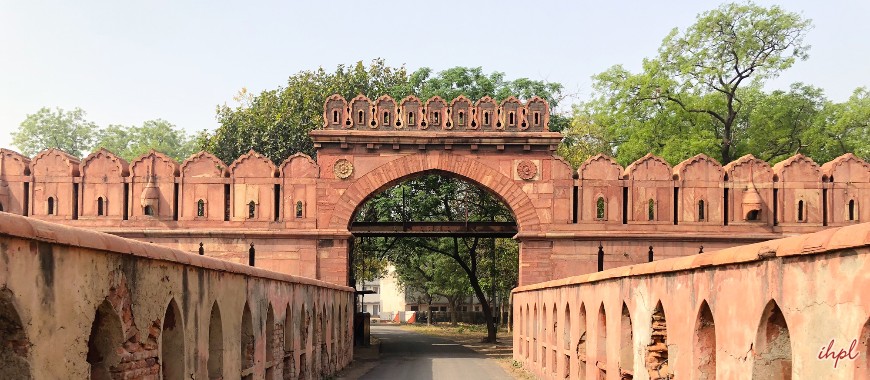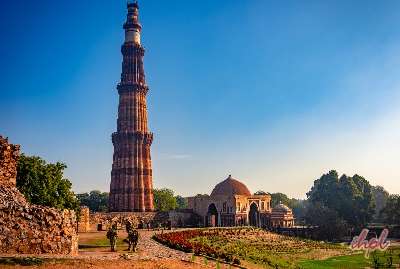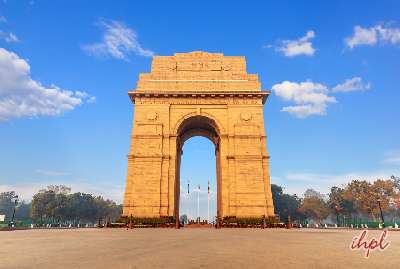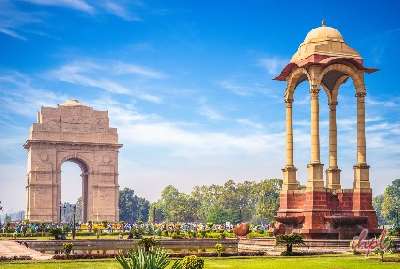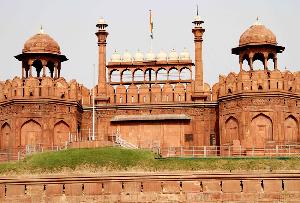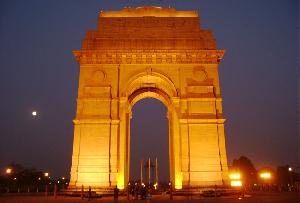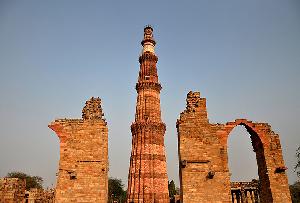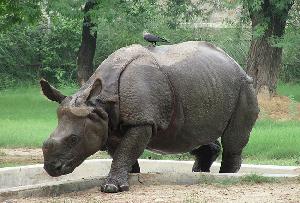Salimgarh Fort was built in 1546 on an island of River Yamuna by Islam Shah Suri, son and successor of Sher Shah Suri. In 1622 AD, Jahangir constructed a bridge and connected the fort to the mainland, later removed by the British when they built railway line through it. This grand structure was then connected to the Red Fort by Shah Jahan, and the fort finally became a state prison during Aurangzeb’s rule. The British continued using it as a prison, and the leaders of Indian National Army were imprisoned here in 1945, whose memorial has been developed inside the fort. The fort has now been renamed as Swatantrata Senani Smarak (Freedom Fighters’ Memorial).
Description
Enclosed by solid rubble masonry walls, the polygonal-shaped Salimgarh Fort once contained several lofty citadels but only its ruins remain. You can enter the fort from its northern gate, built of brick masonry, called Bahadur Shahi Gate as Bahadur Shah Zafar constructed it in 1854-55 AD.
History:
Located adjacent to the Red Fort across the Ring Road, Salimgarh Fort was built in 1546 on an island of River Yamuna by Islam Shah Suri, also known as Salim Shah, son and successor of Sher Shah Suri. However, the construction was abandoned when Salim Shah died, with only the walls being completed. Later many Mughal rulers including Humayun camped here before the creation of Shahjahanabad. In 1622 AD, Jahangir constructed a bridge and connected the fort to the mainland, later removed by the British when they built railway line through it. This grand structure was then connected to the Red Fort by Shah Jahan, and the fort finally became a state prison during Aurangzeb’s rule. The British continued using it as a prison and kept its artillery units here after the war of 1857. The leaders of Indian National Army were imprisoned here in 1945, whose memorial has been developed inside the fort. Salimgarh Fort was renamed as Swatantrata Senani Smarak (Freedom Fighters’ Memorial) after India achieved Independence.
You can enter the fort from its northern gate, built of brick masonry, called Bahadur Shahi Gate as Bahadur Shah Zafar constructed it in 1854-55 AD. The fort once contained several lofty citadels, but only the ruins of those remain today.
Fast – facts:
Salimgarh Fort was built in 1546 on an island of River Yamuna by Islam Shah Suri, son and successor of Sher Shah Suri. Following are some fast facts about Salimgarh Fort
Location
Located about a kilometer northeast of Red Fort on the Ring Road in Old Delhi.
Time to Visit
Open on all days of the year, round the clock, but preferably be there between 10.00 am -5.00 pm. There is no admission fee, as it is open to all. It takes around 40 minutes exploring this colossal structure.
How to Reach
To reach the Salimgarh Fort, you can fly down to the Indira Gandhi International Airport in Delhi. You can either avail of local buses from various points within the city to reach the monument, or hire auto-rickshaws and taxis or take the metro rail. The nearest functional Metro station is Kashmiri Gate, while the nearest railway station is the Old Delhi Railway Station.
Nearby Places to Eat
Some of the popular eat-outs near Salimgarh Fort are Karim Hotel, Ghantewala sweet shop, Paranthewali gali, Natraj hotel, Chor Bizarre of Broadway Hotel, Daryaganj’s Flora, Peshwari, Moti Mahal Restaurant, etc.
Nearby Attractions:
Salimgarh Fort was built in 1546 on an island of River Yamuna by Islam Shah Suri, son and successor of Sher Shah Suri. Following are some of the famous tourist attractions near Salimgarh Fort –
Red Fort:
Initially known as Qila-e-Mualla, Red fort or Lal Qila was built by the Mughal Emperor Shah Jahan after he transferred his capital to his newly planned city of Shahjahanabad from Agra in 1638.
Jama Masjid:
The largest mosque of India, built by Shah Jahan, Jama Masjid was originally called Masjid-i-Jahanuma or the Mosque commanding a view of the World.
Chandni Chowk:
One of the oldest and busiest markets in central north Delhi, Chandni Chowk has a variety of shops selling books, clothing, leather goods, electronic goods, etc.
St James Church:
Consecrated in 1836, this beautiful church built by the Colonel James Skinner was said to be an imitation of St Paul’s Cathedral in London.
Dara Shikoh Library:
Constructed by Shah Jahan’s liberal intellectual son and chosen successor, Dara Shikoh, is the Dara Shikoh Library of the Department of Archaeology, Delhi Administration.
Lothian Cemetery:
Located on Lothian Road, Lothian cemetery is the first British cemetery of Delhi.
Raj Ghat:
The most popular memorial in Delhi, Raj Ghat was set up in honor of the Father of the Nation – Mahatma Gandhi.

